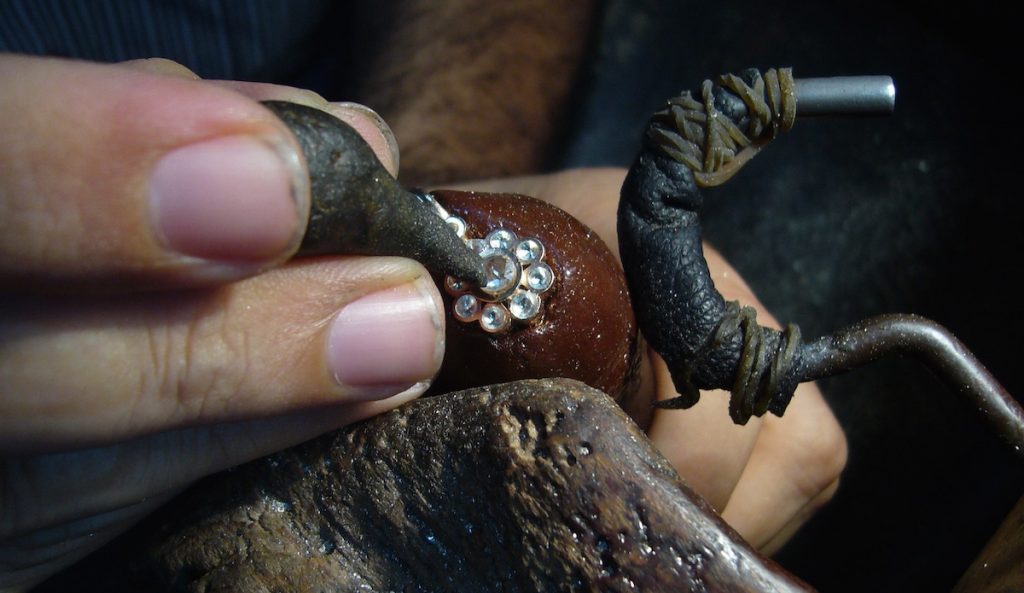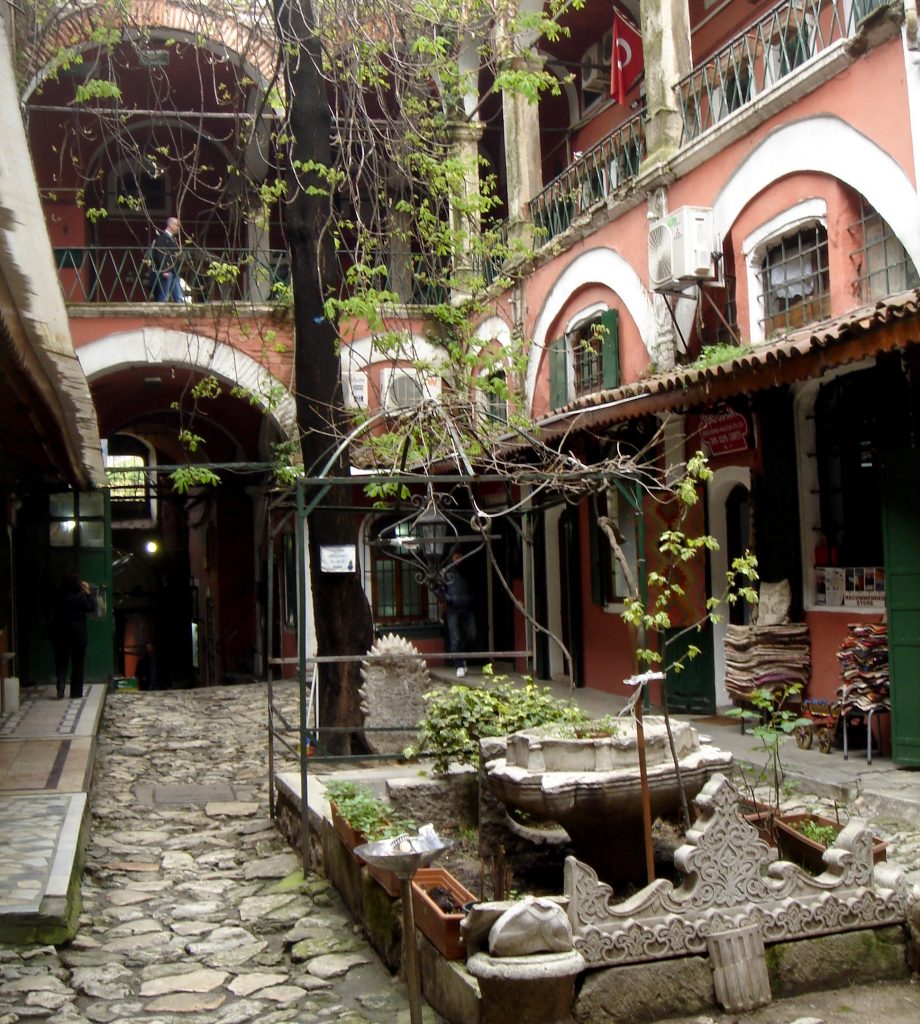Armenian artisans of the Grand Bazaar

Tracing the footsteps of Armenian craftspeople and artisans, through the corners and small alleyways of Istanbul’s never-ending and magnificent bazaar.
For years, Istanbul’s Grand Bazaar disappointed me. I was unimpressed with its unhistorical shops selling factory-made Turkish delight, Made-in-China pashminas, belly-dancer outfits and kitsch stained-glass lamps.
I wanted to time-travel back to the bazaar that Italian novelist Edmondo De Amicis described in 1877, a place where “every shop door is the frame of a picture full of colour and romance.” I wanted to see the narrow stalls that were more like cupboards than spaces where you could comfortably enter and browse. I wanted to sit on street divans and drink coffee with the Turkish, Armenian, Jewish and Greek shopkeepers. I wanted to watch artisans toil away inside tiny ateliers. But I thought that none of that would be possible in a place where the only thing resembling a renowned Ottoman market were the arches overhead.
“By asking and asking, you arrive in Baghdad.”
Recently however, I heard about an Armenian hand engraver named Mayk Zıngık. I had no idea where he worked, but an elderly Greek friend had told me that everyone in the Bazaar knows Mayk the Engraver. My friend also quoted a Turkish proverb: “By asking and asking, you arrive in Baghdad.” After an hour of unfruitful searching and repeated asking, I started thinking the proverb applied only to Baghdad and not to Zıngık. Finally, I came upon a bored old man sitting on a stool outside a dark, closed shop, swinging his worry beads. If there was anybody who would know Mayk Zıngık, it had to be him.
“Excuse me, sir,” I said, “ do you know where I can find Mayk the Engraver?”
“Master Mayk? Follow me.”
The old man escorted me past the nearby police station to a tiny jewellery shop in Reisoğlu Sokak. The storefront was no more than six feet wide – the historic size of Grand Bazaar stalls. Moreover, the sign above the door said Sevan, an Armenian name. I thanked the old man and knocked on the door.
Fifty-year-old Armenian diamond setter Sevan Hallaçyan, turning sideways in order to pass through the 18-inch doorway, regretfully informed me that Master Mayk only worked on Saturdays. Seeing my disappointment, he invited me inside the tiny atelier of polished walnut cabinets and inset mirrors, ordered tea from a nearby concession and offered to tell me as much as he could about his own traditional craft.
“There’s trust here. If a merchant orders something from me, I do the work, deliver it and know I’ll have my money within a week.”
“My father became an apprentice engraver in 1942,” said Hallaçyan, seated at his hornbeam workstation. “He opened this shop in ‘55, when the minorities still had a strong presence.” With the exception of one electric tool, Hallaçyan said he practices his craft exactly the way the Armenian grandmasters have done since the bazaar opened. To demonstrate, he pulled the leather craftsman’s apron, which is attached to the work desk itself, over his lap. He took out a half-finished ring – with five large diamond settings sitting horizontally across three fingers – and stuck it into an antique wooden holder, then began cutting a setting with a pair of Lilliputian scissors.

“It took me two years to learn how to cut foil,” he said. “The slightest pressure will crush it. I don’t even hold it, just direct it.”
He licked a one-carat diamond, rubbed it on a patch of leather, grabbed the only modern tool I saw him use – a spiral motor – and sealed the gem in place. But to prove he doesn’t have to use anything electric, he set the next diamond with a thick pin and a metal fly-swatter-looking tool called a martela.
Most of Hallaçyan’s business comes from larger retail shops within the bazaar. “There’s trust here,” he said. “Nobody uses checks. If a merchant orders something from me, I do the work, deliver it and know I’ll have my money within a week.”
Hallaçyan later took me to the atelier of 54-year-old Bedros Muratyan in the bazaar’s Zincirli Han, a two-storey ceramic-red caravanserai. According to Muratyan, a die sinker, the Zincirli is 500 years old. Although the building now houses shops and ateliers, when he was a boy, it was still a han.
“The ground-floor rooms were horse stables,” he said. “The upper-floor chambers were for travellers. My father converted a guest room in 1944. Later, he planted the wild chestnut tree at the centre of the courtyard. Now it’s taller than the han itself.”
Antique dies for saucers, crosses, heads of Atatürk, and verses from the Qur’an cover Muratyan’s worktables. There’s an ancient-looking oven that was installed in the 1940s, a mezzanine with a rickety spiral staircase and a large hand press which, when given a swing with just the right amount of force, stamps medallions. Muratyan doesn’t have a retail space, but his designs are featured in Nişantaşı’s upscale shops.
“He planted the wild chestnut tree at the centre of the courtyard. Now it’s taller than the han itself.”
“My best childhood memories,” he said, “are the Republic Day celebrations. We’d set up tables for 150 people in the arcades, play music and party until the evening. That stopped when I was in my 20s. That’s when we lost the old artisans who knew how to enjoy life – Turks, Armenians, Greeks, Jews, Italians.”
As we sipped nescafé from plastic cups in Muratyan’s mezzanine, I asked what he liked best about the bazaar. “Human values, comradery, friendship,” he said. “Years ago, if an artisan had a lot of work one day and his neighbour none, he’d send customers to the neighbour. There’s less of that old culture now – but compared to other places, it’s still good.”
Mayk the Engraver, whom I finally met in a few weeks later, in Hallaçyan’s shop, was understandably more nostalgic than his younger colleagues.
“Today, who will bring a kid to apprentice? Adults don’t have the patience. The profession is dying.”
Running his fingers over his trim white beard, he said, “I still remember the names of our neighbours 50 years ago. But I hardly know anybody now. There’s no guild anymore, no apprentices. I came to this shop in 1970, when I was 14. All I did was watch my master – Sevan’s father – for two whole years. Today, who will bring a kid to apprentice? Adults don’t have the patience. The profession is dying.”
He then showed examples of his intricate work: rings engraved with floral motifs even on their lower shank interiors and under galleries, cufflinks with Armenian initials, and a few pieces with three-dimensional engraving, all of which he does with traditional gravers. “This is art,” he said. “Every piece is different from the next. Earlier, people used to value that.”
When I asked about his best Grand Bazaar memory, Zıngık looked over his reading glasses and replied: “It was a Ramadan iftar dinner that we Armenians sponsored for our Muslim colleagues in 2005. We set up low tables down the entire length of the street. Everybody had a great time.”
“Human values, comradery, friendship.”
As I left Hallaçyan’s shop that afternoon, I recalled Edmondo De Amicis’ description of the bazaar’s jewellery quarter: “a dark, deserted alley, flanked by mean-looking shops, which no one would think contained the fabulous treasures which are hidden there.” That’s when I realised that the Grand Bazaar had changed less since 1877 than I had originally supposed.
It is still a place where the persistent visitor can find hidden treasures.







One thought on “Armenian artisans of the Grand Bazaar”